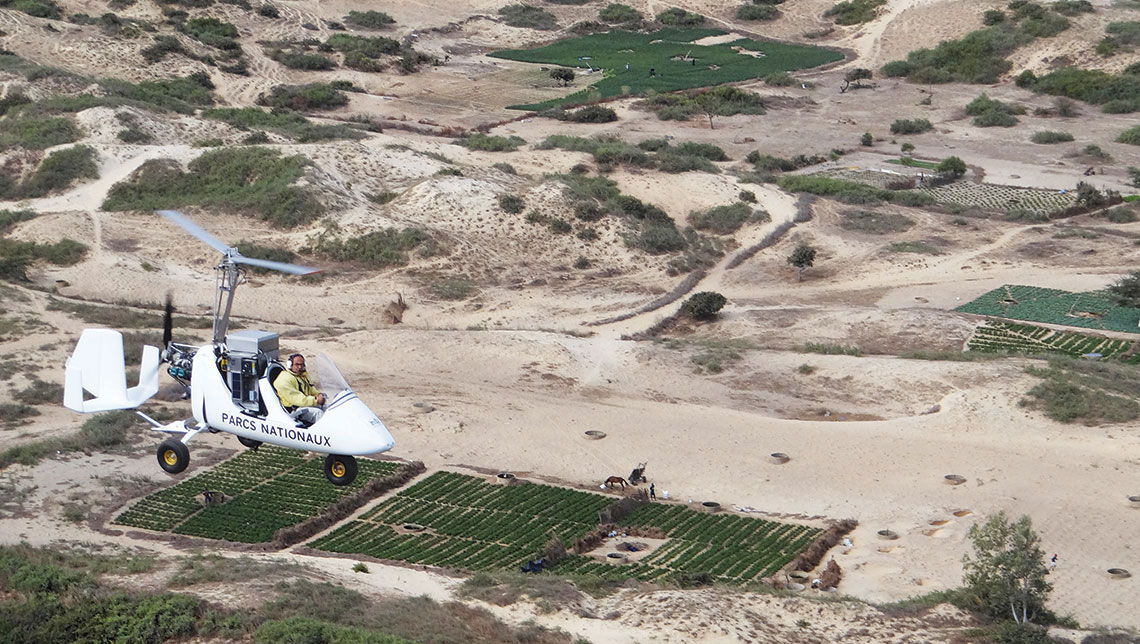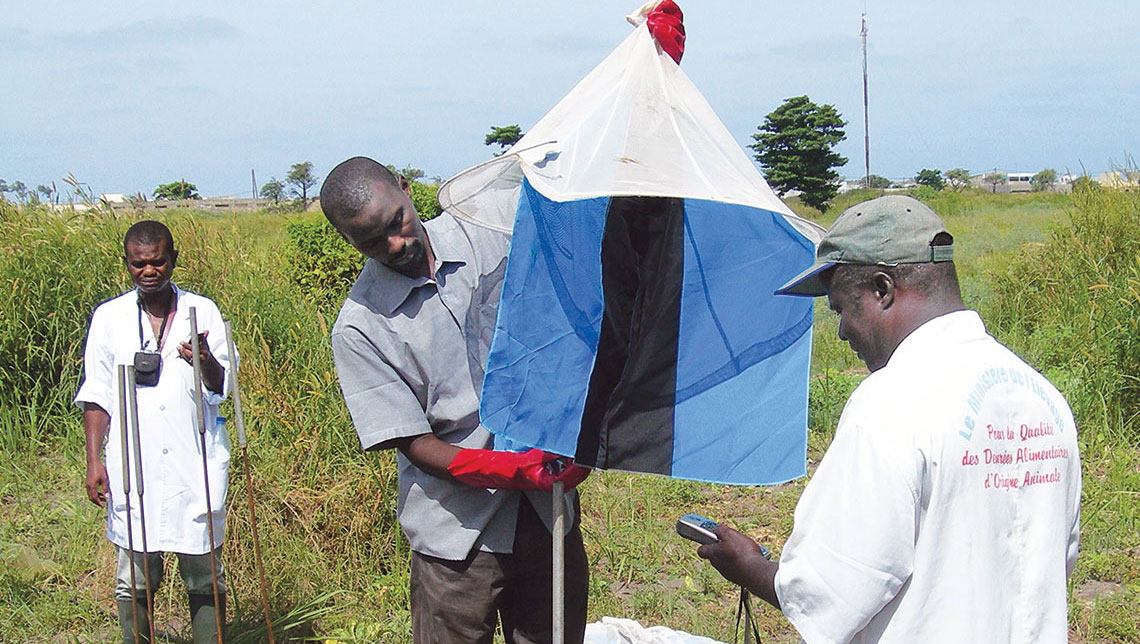The Niayes region of western Senegal has a coastal microclimate well suited for exotic breeds of cattle, the kind that produce more milk and meat than domestic stock. Yet the area also suffers from infestation of a tsetse fly species, Glossina palpalis gambiensis. Tsetse flies are a major insect pest in sub-Saharan Africa that transmit animal trypanosomosis or nagana, a disease responsible for the death of at least three million animals each year. Presence of the fly has inhibited herd improvement because the more productive breeds have no tolerance to nagana, and preventative treatments are too expensive for local farmers. However, the situation is changing, thanks to a successful tsetse fly eradication campaign involving sterile insect technique (SIT). The programme, supported by the Joint FAO/IAEA Division and partners, has become a model project for other African countries.
A feasibility study initiated in 2006 to determine the possibility of creating a sustainable tsetse-free zone in Senegal’s Niayes region, found that 28.7 per cent of the cattle residing in and around the tsetse infested area were infected with trypanosomosis. Even when not fatal, this disease reduces livestock fertility, weight gain, milk and meat production, increases abortion and makes the animals too weak for ploughing or transport.
The study also found that the tsetse habitat in the area was extremely fragmented. flies were present in small, but often highly dense, pockets that were isolated from other tsetse populations. Therefore, the removal of the Niayes population would be sustainable because there would be no risk that tsetse from other parts of Senegal would reinfest the area.


